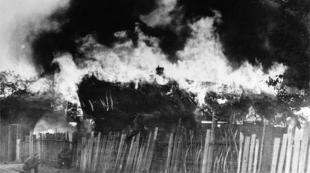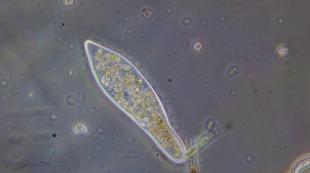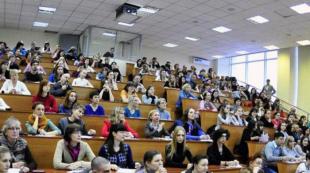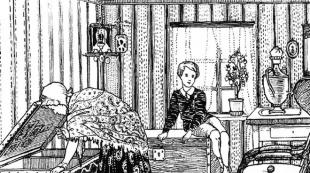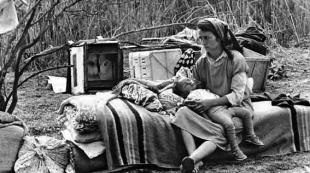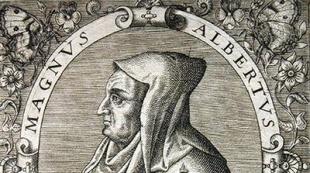Aksakov genus. Coat of arms of the Aksakov family. "The history of ancestors is always curious for those who are worthy of having a fatherland"
Aksakovs(in old times Oksakovs) - Russian noble family, one of many who claimed (according to the fable of the 17th century) to be descended from the noble Varangian Shimon.
Story
In genealogies, Ivan Fedorovich is shown as the founder of the family. Oksak(in the Turkic languages this nickname means "lame"), who allegedly belonged to the boyar clan of the Velyaminovs. His descendants in the 16th-17th centuries served as governors, solicitors, stolniks, were among the Moscow nobles and were granted estates from Moscow sovereigns for their service:
- Fedor Dmitrievich Oksakov- grandson of Ivan Oksak
- Mikhail Fedorovich Nizenky- governor in Novgorod-Seversky and Starodub
- Protasy Mikhailovich- governor in Staraya Russa; owned land in the Moscow district
- Semyon Protasyevich- governor in Kargopol in 1667-1668.
- Pyotr Semyonovich(1662 - after 1732) - served in the Novotorzhsky regiment, retired lieutenant colonel, took part in the Second Azov campaign of 1696
- Dmitry Semyonovich- captain
- Pyotr Dmitrievich- foreman, actual chamberlain, state councilor; since 1740 - vice-governor in the Ufa province
- Andreyan Petrovich- lieutenant; owned the village of Savinki, Mikhailovsky district, Ryazan province; by the definition of the Ryazan noble deputy assembly of November 22, 1796, it was included in the VI part of the noble genealogy book Ryazan province
- Pyotr Dmitrievich- foreman, actual chamberlain, state councilor; since 1740 - vice-governor in the Ufa province
- Ivan Semyonovich Menshoi(1679-1735) - governor in Klin (1735)
- Nikolay Ivanovich(c. 1721-1798) - nephew of the previous one, landowner in the Klin district of the Moscow province; his descendants were included in the VI part of the noble genealogy book of the Moscow province
- Nikolay Vasilievich(1829-1902) - grandson of the previous one, forester (in Kaluga, then - Kostroma and Yaroslavl provinces)
- Sergey Nikolaevich(1861-1917) - vowel from the Kozelsky district of the Kaluga provincial zemstvo assembly
- Sergey Sergeevich(1899-1987) - an active participant in the ROVS
- Vladimir Nikolayevich(1863-1916) - lieutenant colonel, Sevsk district military chief
- Georgy Nikolaevich(1873-1914) - bailiff in the Kaluga province
- Mikhail Georgievich(1903-1938) - military pilot of the Red Army
- Sergey Nikolaevich(1861-1917) - vowel from the Kozelsky district of the Kaluga provincial zemstvo assembly
- Nikolay Vasilievich(1829-1902) - grandson of the previous one, forester (in Kaluga, then - Kostroma and Yaroslavl provinces)
- Nikolay Ivanovich(c. 1721-1798) - nephew of the previous one, landowner in the Klin district of the Moscow province; his descendants were included in the VI part of the noble genealogy book of the Moscow province
- Mikhail Protasyevich- since 1703 "a retired steward living in Moscow for parcels"
- Alexey Mikhailovich(d. 1772) - captain of artillery
- Ivan Alekseevich- artillery colonel
- Nikolay Ivanovich(c. 1784-1848) - Aleksinsky district marshal of the nobility (1832-1837); by the definition of the Tula noble deputy assembly of February 16, 1825, together with his wife and sons, he was included in the IV part of the noble genealogy book Tula province; also had land in the Ryazan and Kostroma provinces; was married to the daughter of the actual Privy Councilor Pyotr Stepanovich Valuev, Praskovye
- Pyotr Nikolaevich (1820-1880)
- Nikolai Petrovich (1848-1909) - Russian publicist, prose writer, poet, historian, theologian
- Alexander Petrovich (1850 - not earlier than 1917) - Russian publicist, writer
- Pyotr Nikolaevich (1820-1880)
- Nikolay Ivanovich(c. 1784-1848) - Aleksinsky district marshal of the nobility (1832-1837); by the definition of the Tula noble deputy assembly of February 16, 1825, together with his wife and sons, he was included in the IV part of the noble genealogy book Tula province; also had land in the Ryazan and Kostroma provinces; was married to the daughter of the actual Privy Councilor Pyotr Stepanovich Valuev, Praskovye
- Ivan Alekseevich- artillery colonel
- Alexey Mikhailovich(d. 1772) - captain of artillery
- Semyon Protasyevich- governor in Kargopol in 1667-1668.
- Fedor Mikhailovich- governor in Vladimir; owned lands in Ustyug district
- Yuri Mikhailovich- governor in Kostroma
- Ivan Alekseevich(c.1752 - after 1801) - Prime Major, Knight of St. George (1794)
- Protasy Mikhailovich- governor in Staraya Russa; owned land in the Moscow district
- Mikhail Fedorovich Nizenky- governor in Novgorod-Seversky and Starodub
- Ivan Alexandrovich Oksakov(died no later than 1586) - grandson of Ivan Oksak
- Leonty Ivanovich- governor in Voronezh and Pskov, Bryansk, Nizhny Novgorod
- Yuri Ivanovich- governor in Velikiye Luki and Rylsk
- Mikhail Yurievich- killed in 1577 in the Livonian campaign
- founder of the Arzamas branch of the Aksakovs Nikifor (Bausch) Mikhailovich (1574-1620)
- Irodion Ivanovich Aksakov(d. 1730) - great-grandson of the previous one, landowner of the Arzamas district
- Nikolay Ivanovich(1730-1802) - grandson of the previous one, governor in Smolensk and Yaroslavl, active privy councilor, member of the Military Collegium
- Mikhail Nikolaevich(1757-1818) - senator, lieutenant general, member of the Military College
- Nikolay Ivanovich(1730-1802) - grandson of the previous one, governor in Smolensk and Yaroslavl, active privy councilor, member of the Military Collegium
- Irodion Ivanovich Aksakov(d. 1730) - great-grandson of the previous one, landowner of the Arzamas district
- founder of the Arzamas branch of the Aksakovs Nikifor (Bausch) Mikhailovich (1574-1620)
- Daniel Yurievich
- Ivan Danilovich
- Eremey (Lubim) Ivanovich(until 1613-1672) - Moscow nobleman
- founder of the Simbirsk branch of the Aksakovs Alexey Eremeevich Aksakov(d. 1680) - great-great-grandson of Yuri Ivanovich; in 1672 he already owned land in the Simbirsk district, the owner of the Troitskoye estate
- Nadezhda Ivanovna(1747-1806) - the great-granddaughter of the previous one, the wife of the commandant of Simbirsk Mikhail Maksimovich Kuroyedov, the mistress of the rich Chufarovo estate (bred from S. T. Aksakov under the name of Praskovia Ivanovna Kurolesova)
- Stepan Mikhailovich(1724-1797) - cousin of the previous one, founder of the village of Novo-Aksakovo in the Orenburg province; married to Irina Vasilievna Neklyudova
- Timofey Stepanovich(1759-1837) - prosecutor of the Ufa Upper Zemstvo Court, founder of the village of Pyostrovka; from his great-aunt, Nadezhda Ivanovna Kuroyedova, the village of Nadezhdino passed to him; wife - Maria Nikolaevna Zubova
- Nadezhda Timofeevna(1793-1887) - wife of the mathematician G. I. Kartashevsky; owner of the Kobrino manor
- Sergei Timofeevich(1791-1859) - prose writer, memoirist, theater and literary critic, owner of the Abramtsevo estate
- Konstantin Sergeevich(1817-1860) - writer, historian and linguist, ideologist of Slavophilism
- Grigory Sergeevich(1820-1891) - Ufa and Samara governor
- Sergei Grigorievich - collegiate secretary
- Aksakov, Sergei Sergeevich (1890/1891-1968) - Russian Soviet composer
- Sergei Grigorievich - collegiate secretary
- Ivan Sergeevich(1823-1886) - writer, editor and publisher, ideologue of Slavophilism
- Vera Sergeevna(1819-1864) - memoirist
- Nikolay Timofeevich(1797-1882), real state councilor, brother of Sergei Timofeevich
- Alexander Nikolaevich(1832-1903), son of the previous one, spiritualist and medium
- Timofey Stepanovich(1759-1837) - prosecutor of the Ufa Upper Zemstvo Court, founder of the village of Pyostrovka; from his great-aunt, Nadezhda Ivanovna Kuroyedova, the village of Nadezhdino passed to him; wife - Maria Nikolaevna Zubova
- founder of the Simbirsk branch of the Aksakovs Alexey Eremeevich Aksakov(d. 1680) - great-great-grandson of Yuri Ivanovich; in 1672 he already owned land in the Simbirsk district, the owner of the Troitskoye estate
- Eremey (Lubim) Ivanovich(until 1613-1672) - Moscow nobleman
- Ivan Danilovich
- Mikhail Yurievich- killed in 1577 in the Livonian campaign
- Semyon Alexandrovich Oksakov- grandson of Ivan Oksak, governor in Starodub (1564-1565).
According to the memoirs of S. T. Aksakov, “antiquity of noble origin was my grandfather’s strong point, and although he had one hundred and eighty souls of peasants, but, producing his family, God knows what documents, from some Varangian prince, he set his seven hundred years the nobility is above all wealth and ranks.
After the October Revolution, the Aksakov family was represented in the USSR by retired lieutenant Boris Sergeevich Aksakov (1886-1954) and his wife Tatyana Aleksandrovna, who left interesting memoirs.
Write a review on the article "Aksakovs"
Literature
- Aksakovs: family encyclopedia / Ed. S. M. Kashtanova. - M. : ROSSPEN, 2015. - 536 p. - ISBN 978-5-8243-1953-8.
- Kuleshov A.S.
- Kuleshov A. S. Naumov O. N. Aksakovs. Generational painting. - Moscow: Territory, 2009.
- Durkin A.R. Sergei Aksakov and Russian Pastoral. - New Brunswick, 1983.
- Annenkova E. I. Aksakovs. - St. Petersburg. : Nauka, 1998. - (Traditions of the Russian family).
- Koshelev V. Age of the Aksakov family // Sever. - Petrozavodsk, 1996. - No. 1-4.
- Lobanov M.P. Sergei Timofeevich Aksakov. - M .: Young Guard, 1987. - (Life of wonderful people).
- Mashinsky S.I. S. T. Aksakov. Life and art. - M., 1973.
- Dolgorukov P.V. Russian genealogical book. - St. Petersburg. : A type. 3 Dep. Own E. I. V. Chancellery, 1857. - T. 4. - S. 44.
- Rummel V.V., Golubtsov V.V. Genealogical collection of Russian noble families. - T. 1. - S. 20-30.
- Sivers A. A. Genealogical intelligence. SPb. 1913. Issue. 1, chapter "Aksakovs". - S. 90-98.
Links
- Nazarov V. L.
An excerpt characterizing the Aksakovs
“In the mosaic briefcase he keeps under his pillow. Now I know,” said the princess, without answering. “Yes, if there is a sin for me, a big sin, then it is hatred for this bastard,” the princess almost shouted, completely changed. “And why is she rubbing herself here?” But I will tell her everything, everything. The time will come!While such conversations were taking place in the waiting room and in the princess's rooms, the carriage with Pierre (who was sent for) and Anna Mikhailovna (who found it necessary to go with him) drove into the courtyard of Count Bezukhoy. When the wheels of the carriage sounded softly on the straw laid under the windows, Anna Mikhailovna, turning to her companion with consoling words, convinced herself that he was sleeping in the corner of the carriage, and woke him up. Waking up, Pierre got out of the carriage after Anna Mikhailovna, and then only thought of that meeting with his dying father that awaited him. He noticed that they did not drive up to the front, but to the back entrance. While he was getting off the footboard, two men in bourgeois clothes hurriedly ran away from the entrance into the shadow of the wall. Pausing, Pierre saw in the shadow of the house on both sides several more of the same people. But neither Anna Mikhailovna, nor the footman, nor the coachman, who could not but see these people, paid no attention to them. Therefore, this is so necessary, Pierre decided with himself, and followed Anna Mikhailovna. Anna Mikhailovna walked with hasty steps up the dimly lit narrow stone stairs, calling Pierre, who was lagging behind her, who, although he did not understand why he had to go to the count at all, and still less why he had to go along the back stairs, but , judging by the confidence and haste of Anna Mikhailovna, he decided to himself that this was necessary. Halfway down the stairs they were almost knocked down by some people with buckets, who, clattering with their boots, ran towards them. These people pressed against the wall to let Pierre and Anna Mikhailovna through, and did not show the slightest surprise at the sight of them.
- Are there half princesses here? Anna Mikhailovna asked one of them...
“Here,” the footman answered in a bold, loud voice, as if everything was already possible now, “the door is on the left, mother.”
“Perhaps the count did not call me,” said Pierre, while he went out onto the platform, “I would have gone to my place.
Anna Mikhailovna stopped to catch up with Pierre.
Ah, mon ami! - she said with the same gesture as in the morning with her son, touching his hand: - croyez, que je souffre autant, que vous, mais soyez homme. [Believe me, I suffer no less than you, but be a man.]
- Right, I'll go? asked Pierre, looking affectionately through his spectacles at Anna Mikhailovna.
- Ah, mon ami, oubliez les torts qu "on a pu avoir envers vous, pensez que c" est votre pere ... peut etre al "agonie." She sighed. - Je vous ai tout de suite aime comme mon fils. Fiez vous a moi, Pierre. Je n "oublirai pas vos interets. [Forget, my friend, what was wrong against you. Remember that this is your father... Maybe in agony. I immediately fell in love with you like a son. Trust me, Pierre. I will not forget your interests.]
Pierre did not understand; again it seemed to him even more strongly that all this must be so, and he obediently followed Anna Mikhaylovna, who had already opened the door.
The door opened into the back entrance. In the corner sat an old servant of the princesses and knitted a stocking. Pierre had never been in this half, did not even imagine the existence of such chambers. Anna Mikhailovna asked the girl who overtook them, with a decanter on a tray (calling her sweetheart and dove) about the health of the princesses and dragged Pierre further along the stone corridor. From the corridor, the first door to the left led to the living rooms of the princesses. The maid, with a decanter, in a hurry (as everything was done in a hurry at that moment in this house) did not close the door, and Pierre and Anna Mikhailovna, passing by, involuntarily looked into the room where, talking, the elder princess and Prince Vasily. Seeing the passersby, Prince Vasily made an impatient movement and leaned back; the princess jumped up and with a desperate gesture slammed the door with all her might, shutting it.
This gesture was so unlike the princess’s usual calmness, the fear expressed on the face of Prince Vasily was so unusual for his importance that Pierre, stopping, inquiringly, through his glasses, looked at his leader.
Anna Mikhailovna did not express surprise, she only smiled slightly and sighed, as if to show that she had expected all this.
- Soyez homme, mon ami, c "est moi qui veillerai a vos interets, [Be a man, my friend, I will look after your interests.] - she said in response to his look and went even faster down the corridor.
Pierre did not understand what was the matter, and even less what it meant veiller a vos interets, [observe your interests,] but he understood that all this should be so. They went down a corridor into a dimly lit hall that adjoined the count's waiting room. It was one of those cold and luxurious rooms that Pierre knew from the front porch. But even in this room, in the middle, there was an empty bathtub and water had been spilled over the carpet. To meet them on tiptoe, paying no attention to them, a servant and a clerk with a censer. They entered the reception room, familiar to Pierre, with two Italian windows, access to the winter garden, with a large bust and a full-length portrait of Catherine. All the same people, in almost the same positions, sat whispering in the waiting room. Everyone, falling silent, looked back at Anna Mikhailovna, who had come in, with her weepy, pale face, and at the fat, big Pierre, who, with lowered head, meekly followed her.
Anna Mikhailovna's face expressed the consciousness that the decisive moment had arrived; she, with the receptions of a businesslike Petersburg lady, entered the room, not letting go of Pierre, even bolder than in the morning. She felt that since she was leading the one whom she wanted to see dying, her reception was assured. With a quick glance at everyone in the room, and noticing the count's confessor, she, not only bending over, but suddenly becoming smaller, swam up to the confessor with a shallow amble and respectfully accepted the blessing of one, then another clergyman.
“Thank God that we had time,” she said to the clergyman, “all of us, relatives, were so afraid. This young man is the son of a count,” she added more quietly. - Terrible moment!
Having spoken these words, she approached the doctor.
“Cher docteur,” she told him, “ce jeune homme est le fils du comte ... y a t il de l "espoir? [this young man is the son of a count ... Is there any hope?]
The doctor silently, with a quick movement, raised his eyes and shoulders. Anna Mikhailovna raised her shoulders and eyes with exactly the same movement, almost closing them, sighed and moved away from the doctor to Pierre. She turned especially respectfully and tenderly sadly to Pierre.
- Ayez confiance en Sa misericorde, [Trust in His mercy,] - she said to him, showing him a sofa to sit down to wait for her, she silently went to the door at which everyone was looking, and following the barely audible sound of this door she disappeared behind her.
Pierre, deciding to obey his leader in everything, went to the sofa, which she pointed out to him. As soon as Anna Mikhaylovna disappeared, he noticed that the eyes of everyone in the room were fixed on him with more than curiosity and sympathy. He noticed that everyone was whispering, pointing at him with eyes, as if with fear and even servility. He was shown respect that had never been shown before: a lady unknown to him, who spoke with clerics, got up from her seat and invited him to sit down, the adjutant picked up the glove dropped by Pierre and gave it to him; the doctors fell silent respectfully as he passed them, and stepped aside to make room for him. Pierre wanted to first sit down in another place, so as not to embarrass the lady, he wanted to pick up his glove himself and go around the doctors, who did not even stand on the road; but he suddenly felt that it would be indecent, he felt that on this night he was a person who was obliged to perform some kind of terrible and expected by all ceremony, and that therefore he had to accept services from everyone. He silently accepted the adjutant's glove, sat down in the lady's place, placing his large hands on symmetrically exposed knees, in the naive pose of an Egyptian statue, and decided to himself that all this should be exactly like that and that he should not to get lost and not to do stupid things, one should not act according to one’s own considerations, but one must leave oneself completely to the will of those who led him.
Less than two minutes later, Prince Vasily, in his caftan with three stars, majestically, carrying his head high, entered the room. He seemed thinner in the morning; his eyes were larger than usual when he looked around the room and saw Pierre. He went up to him, took his hand (which he had never done before) and pulled it down, as if he wanted to test whether it was holding tight.
My people. Gray-eyed king. The leaf is withered. N. Altman. World recognition. Portrait of Anna Akhmatova. Washington Literary and Musical Museum. Courage. Anna Akhmatova. Tsarskoye Selo. A. Akhmatova in the senior classes of the gymnasium. She was born June 11, 1889. Love of life. Picturesque portraits. Gumilev. Yu.Annenkov. Hopeless pain. What was Anna Akhmatova.
"Aitmatov "Stormy Station"" - The problem of humanity and mercy. Poetry of the native hearth. Edigei Buranny. Boranly. Chingiz Torekulovich Aitmatov. Space history. The problem of caring. The theme of the novel. Creativity of Aitmatov. Introduction to literature. Titles and awards. Entry into literature. Legend. Buran station. Communication problem. The problem of the novel. Memory problem. Socio-historical problem.
"Writer Aksakov" - Valery Ganichev. Memorial Aksakov sign. Marya Nikolaevna Aksakova (Zubova). Coat of arms of the Aksakov family. The parents' house in Golubina Sloboda has not been preserved. Valentin Rasputin. Memorial House - Museum of S. T. Aksakov. Mikhail Chvanov. Aksakov street. Aksakov People's House. Sergei Timofeevich Aksakov was born on September 20. Governor's house. Autobiographical trilogy "Family Chronicle". Stanislav Kunyaev.
"Alighieri" - Dante Alighieri Biography. Greed is artificial poverty. The Dante family belonged to the urban nobility of Florence. Alighieri Dante. The first years of Dante's exile - among the leaders of the White Guelphs, takes part in the armed and diplomatic struggle with the winning party. There is no greater torment than the memory of a happy time in misfortune. He took an active part in the political life of Florence; from June 15 to August 15, 1300, he was a member of the government (he was elected to the post of prior), trying, while acting, to prevent the aggravation of the struggle between the parties of the White and Black Guelphs (see Guelphs and Ghibellines).
"Averchenko" - Moves to St. Petersburg. Emigration. The beginning of literary activity. Story analysis. Humor. Rich. About birth. Last name of the main character. Mixing. Averchenko is a teenager. Perky "red-cheeked" humor. Averchenko's books. King of laughter. About the childhood of the writer. Acquaintance with life and creativity. Panteley. Political regime. The story "Features from the life of Pantelei Grymzin". Writer humor. Reminder.
"Biography and work of Anna Akhmatova" - Personality. It is interesting. The name of Anna Akhmatova. Statements about Anna Akhmatova. Tsvetaeva. Poets of the Silver Age. The funeral of A. Blok. "Royal Word" by Anna Akhmatova. God. Portrait of Akhmatova. Rusting gold. Sayings of famous people. A dark-skinned youth wandered along the alleys. The main features of the lyrics. The queen is a tramp. Deadly mercy. Family. Friends. O. Mandelstam. The mystery of the popularity of love lyrics.
In 1750, Ivan Yurievich Trubetskoy died. And with his death, the era of the Russian boyars ended, the history of the clans that had served in the public service for centuries. It is interesting to remember their history today ...
Trubetskoy
The princes Trubetskoy belong to the Gediminovich dynasty, the descendants of the Grand Dukes of Lithuania. Representatives of this family went to the service of the Moscow Grand Dukes at the beginning of the 15th century. By the end of the 17th century, Russia was already serving the ninth generation of this kind, whose representatives occupied the highest posts in the state: they were appointed governors, heads of orders, in embassies to foreign sovereigns.

Ivan Yurievich Trubetskoy
In the History of the Generations of the Russian Nobility, Ivan Yuryevich is called the last Russian boyar, in this capacity he was still surrounded by the young Peter I. Ivan Yuryevich was a long-liver, died at the age of 83. Ivan Yuryevich spent 18 years of his long life in Swedish captivity. He got there at the very beginning. Northern war. The father of two daughters, had as sons-in-law the Moldavian ruler Dmitry Cantemir and Prince Ludwig-Wilhelm of Hesse-Homburg, Field Marshal. In captivity, Ivan Yuryevich from Baroness Wrede gave birth to a son, who was named Ivan. Ivan Ivanovich Betskoy became a famous educator and teacher of the times of Catherine II, the founder and first president of the Academy of Arts.
Velyaminovs
The family originates from Shimon (Simon), the son of the Varangian prince Afrikan. In 1027 he arrived in the army of Yaroslav the Great and converted to Orthodoxy. Shimon Afrikanovich is famous for participating in the battle with the Polovtsians on Alta and making the largest donation for the construction of the Caves Church in honor of the Assumption of the Blessed Virgin Mary: the precious belt and legacy of his father is a golden crown. But the Velyaminovs were known not only for their courage and generosity: a descendant of the family, Ivan Velyaminov, fled to the Horde in 1375, but was later captured and executed on the Kuchkov field.

Coat of arms of the Velyaminovs
Despite the betrayal of Ivan Velyaminov, the family did not lose its significance: the last son of Dimitri Donskoy was baptized by Maria, the widow of Vasily Velyaminov, a Moscow thousand. The following genera stood out from the Velyaminov family: Aksakov, Vorontsov, Vorontsov-Velyaminov. Detail: Muscovites are still reminded of the most noble Moscow family of the Vorontsov-Velyaminovs by the name of the street “Vorontsovo Pole”.
Morozov
The clan of the Morozov boyars is an example of a feudal family from among the old Moscow untitled nobility. The founder of the surname is considered to be a certain Michael, who came from Prussia to serve in Novgorod. He was among the “six brave men” who showed special heroism during the Battle of the Neva in 1240. The Morozovs faithfully served Moscow under Ivan Kalita and Dmitry Donskoy, occupying prominent positions at the grand ducal court. However, their family suffered greatly from the historical storms that overtook Russia in the 16th century. Many representatives of a noble family disappeared without a trace during the bloody oprichnina terror of Ivan the Terrible.

Fragment of a painting by V.I. Surikov "Boyar Morozova"
The 17th century was the last page in the centuries-old history of the family. Boris Morozov had no children, and the only heir of his brother, Gleb Morozov, was his son Ivan. By the way, he was born in a marriage with Feodosia Prokofievna Urusova - the heroine of the painting by V.I. Surikov "Boyarynya Morozova". Ivan Morozov did not leave male offspring and turned out to be the last representative of a noble boyar family that ceased to exist in the early 80s of the 17th century. Detail: The heraldry of the Russian dynasties took shape under Peter I, which is probably why the coat of arms of the Morozov boyars was not preserved.
Buturlins
According to the genealogical books, the Buturlin family comes from an “honest man” under the name Radsha, who left the Semigrad land (Hungary) at the end of the 12th century to the Grand Duke Alexander Nevsky.

Coat of arms of the Buturlin family
“My great-grandfather Racha served St. Nevsky as a muscle of battle,” wrote A.S. Pushkin in the poem "My Genealogy". Radsha became the ancestor of fifty Russian noble families in Tsarist Moscow, among them are the Pushkins, the Buturlins, and the Myatlevs ... But let's return to the Buturlin family: its representatives faithfully served first the Grand Dukes, then the sovereigns of Moscow and Russia. Their family gave Russia many prominent, honest, noble people, whose names are still known.
Let's name just a few of them. Ivan Mikhailovich Buturlin served as a roundabout under Boris Godunov, fought in the North Caucasus and Transcaucasia, conquered almost all of Dagestan. He died in battle in 1605 as a result of betrayal and deceit by the Turks and mountain foreigners. His son Vasily Ivanovich Buturlin was the governor of Novgorod, an active associate of Prince Dmitry Pozharsky in his fight against the Polish invaders.

Ivan Ivanovich Buturlin
Ivan Ivanovich Buturlin was awarded the title of St. Andrew's Cavalier, General-in-Chief, Ruler of Little Russia for military and peaceful deeds. In 1721, he actively participated in the signing of the Treaty of Nystadt, which put an end to the long war with the Swedes, for which Peter I awarded him the rank of general. Vasily Vasilyevich Buturlin was a butler under Tsar Alexei Mikhailovich, having done a lot for the reunification of Ukraine and Russia.
Sheremetevs
The Sheremetev family is descended from Andrey Kobyla. The fifth generation (great-great-grandson) of Andrei Kobyla was Andrei Konstantinovich Bezzubtsev, nicknamed Sheremet, from whom the Sheremetevs descended. According to some versions, the surname is based on the Turkic-Bulgarian “sheremet” (“poor fellow”) and the Turkic-Persian “shir-muhammad” (“pious, brave Muhammad”).
Coat of arms of the Sheremetevs. Fragment of the lattice gate of the Sheremetev Palace.
Many boyars, governors, governors came out of the Sheremetev family, not only due to personal merit, but also due to kinship with the reigning dynasty. So, the great-granddaughter of Andrei Sheremet was married to the son of Ivan the Terrible, Tsarevich Ivan, who was killed by his father in a fit of anger. And five grandchildren of A. Sheremet became members of the Boyar Duma. The Sheremetevs took part in the wars with Lithuania and the Crimean Khan, in the Livonian War and the Kazan campaigns. Estates in Moscow, Yaroslavl, Ryazan, Nizhny Novgorod counties complained about their service.
Lopukhins
According to legend, they descend from the Kasozhian (Circassian) prince Rededi, the ruler of Tmutarakan, who was killed in 1022 in single combat with Prince Mstislav Vladimirovich (son of Prince Vladimir Svyatoslavovich, the baptizer of Russia). However, this fact did not prevent the son of Prince Rededi, Roman, from marrying the daughter of Prince Mstislav Vladimirovich.

Evdokia Fedorovna Lopukhina, Empress. The first wife of Tsar Peter I until 1698
It is authentically known that by the beginning of the XV century. the descendants of the Kasozhsky prince Rededi already bear the surname Lopukhins, serve in various ranks in the Novgorod principality and in the Moscow state and own lands. And from the end of the XV century. they become Moscow nobles and tenants at the Sovereign's Court, retaining the Novgorod and Tver estates and estates. The outstanding family of the Lopukhins gave the Fatherland 11 governors, 9 governors-general and governors who ruled 15 provinces, 13 generals, 2 admirals. Lopukhins served as ministers and senators, headed the Cabinet of Ministers and the State Council.
Aksakovs
They are descended from the noble Varangian Shimon (in baptism Simon) Afrikovich or Ofrikovich, the nephew of the Norwegian king Gakon the Blind. Simon Afrikanovich arrived in Kiev in 1027 with a retinue of three thousand and built at his own expense the Church of the Assumption of the Mother of God in the Kiev-Pechersk Lavra, where he was buried.

The coat of arms of the Aksakovs was included in the fourth part of the "General Armorial"49, approved by Emperor Paul on December 7, 1799.
The surname of the Oksakovs (in the old days), and now the Aksakovs, came from one of his descendants, Ivan the Lame. The word "oksak" means "lame" in Turkic languages. Members of this family in pre-Petrine times served as governors, solicitors, stolniks and were rewarded for their good service with estates from Moscow sovereigns.
d.b.: 1791-10-01
Russian writer, literary and theater critic
Version 1. What does the name Aksakov mean
The first part of the Aksakov version is 100 percent correct.
Do not forget that Genghis Khan and his descendants kept Russia in bondage for more than 300 years. And of course, the modern heirs of the Aksakov family, who consider themselves Russians, do not support the version of origin from the Tatars, even more than that, they rely on DNA. But DNA tests are taken from the wrong sources.
I will say more the word aksak (lame) is not Tatar. Tatars in the old days were called all non-Russian origin. The word aksak is Turkic (lame). And the Turkic-speaking peoples are Kazakhs and Tatars and Kirghiz and Turks and Tuvans and Yakuts and Azerbaijanis and fifty more nations and nationalities !!!
Version 3
The surname Aksakovs really came from the Turkic nickname (Aksak), which is lame in Tatar. And here she got
Russian people. Proof of this, the descendants of the Aksakovs who budded from the Velyaminovs passed a DNA test
and received the DNA of the Baltic Slavs R1a1a1b1a1b
Version 4
Archives, velvet book, Dolgoruky's generational painting
P.R.R-Golubtsov they say, the Moscow boyar Ivan Fedorovich Velyaminov is a Russian man
a descendant of the Varangian prince Shimon (Simon) Afrikanovich had a nickname (Aksak), lame in Turkic.
At the time when this nickname was given, the influence of the horde was still great. Therefore, they called it not lame,
(he was apparently lame) a (Aksak) and since then in our family the surname is not the Velyaminovs, but the Aksakovs.
Version 5
The surname Aksakov has a very interesting story origin and belongs to the common type of the most ancient oriental surnames, originating from the Turkic nickname Aksak. Such nicknames were given to a Slav, a person who had nothing to do with the Turks. The nickname usually referred to some personality traits. In the future, they got used to the nickname, and the descendants inherited it. As a rule, the original meaning of the word that formed the basis of the nickname was forgotten.
The surname Aksakov is derived from the nickname Aksak, which means "lame" in Tatar. Thus, the surname indicates the external features of the ancestor.
This nickname and surname were quite popular in the old days. So, in the "Onomasticon" S.B. Veselovsky are mentioned: Ivan Fedorovich Aksak Velyaminov, the ancestor of the Aksakov family (mid-15th century), who owned the village of Aksakovo on the Klyazma River in the Moscow district; Prince Dmitry Grigorievich Aksak Mortkin (1600).
Aksakovs (in the old days also Oksakovs) descend, judging by the genealogical books, from the noble Varangian Shimon (in baptism Simon) Afrikovich or Ofrikovich, the nephew of the King of Norway Gakon (or Yakun) the Blind, who arrived in Kiev in 1027 with 3 thousand squads and built in the Kiev-Pechersk Lavra, at his own expense, the Church of the Assumption of the Mother of God, where he was buried.
His son, Yuri Simonovich, was a boyar under the Grand Duke Vsevolod Yaroslavich. The great-grandson of Yuri Simonovich, Protasya Fedorovich, had a son, Veniamin. Benjamin has Vasily (nickname Vzolmen), a Moscow thousand. Vasily has sons: Yuri (Grunka), Theodore (Voronets) and others. Yuri Vasilyevich had a son Andrei-Feodor (Koloma), who had 4 sons: Benjamin, Theodore (Drunkard), Alexander (Taurus) and Daniel (Solovets). Veniamin Andreevich or Feodorovich had 2 sons: Theodore and Alexei (Great) Veniaminovichi. The first, Theodore, had a son, Ivan, nicknamed Oksak, from whom the Oksakovs (in the old days), and now the Aksakovs, “were led”.
Members of this family in pre-Petrine times served as governors, solicitors, stolniks, were among the Moscow nobles and were granted estates from the Moscow Sovereigns for their service. In the XVIII century, one of the Oksakovs, Nikolai Ivanovich (born in 1730, died in 1802), served under Catherine II as a major general, governor in Smolensk and Yaroslavl. Under Emperor Paul, he became a lieutenant general: on October 28, 1800, he was granted a real privy councilor, but, wanting to keep his military uniform, at his own request, he was renamed lieutenant general and appointed a member of the military collegium. at present it is difficult to say, since the process of forming surnames was quite lengthy. However, it is undeniable that
Version 8
Velyaminov Ivan Fedorovich The Moscow boyar had a nickname (Aksak) in the 15th century. Descendant of the Varangians.
The Aksakovs were taken from him. But since the nickname (Aksak) is lame in Tatas), even S.B. Veselovsky
attributes the Aksakovs to the Tatars. I am a descendant
Velyaminov Ivan Fedorovich, Aksakov was tested for DNA, which showed
Russian haplogroup. I ask everyone before publishing materials on the genealogy
you need to know her.
Version 10
Mikhail Mikhailovich Aksakov - Kit No: 152907 at the Family Tree DNA laboratory, USA Houston, was tested and received the haplo group of the Baltic Slavs of the obodrite tribe (R1a1a1g1c) R1a1a1b1a1b
“Every thinking and feeling person is simply obliged to preserve the memory of those whom he knew. Only when many lives of people are known, it is possible to write the history of the people and mankind” A.A. Zimin In the genealogical consciousness of the Russian nobility, a large place was occupied by legends that declared the origin of childbirth. In many cases, they boiled down to legends about the departure from abroad to Russia of a noble foreigner who occupied a high position among the service class. There was a similar legend among the Aksakovs, whose family was blessed by the Monk Theodosius of the Caves in the 11th century and descended, according to a number of researchers, from the grandson of the Swedish king Olaf I, the "noble Varangian prince" Shimon, in the baptism of Simon, who came to Kiev to Prince Yaroslav the Wise with a three thousand strong squad in 1027. According to the genealogies, six surnames came from Shimon: the Velyaminovs, the Vorontsovs, the Vorontsovs-Velyaminovs, the Aksakovs, the Islenyevs and the Bashmakovs. The origin from the Swedish royal family is not directly confirmed by the sources, but it is not refuted either, however, the antiquity of the families listed is beyond doubt. The Aksakovs directly separated from the Velyaminov family in the 15th century. The founder of the family was Ivan Fedorovich Velyaminov, nicknamed Aksak (previously spelled Oksak). This word, translated from Turkic, means "lame" and, possibly, indicated the physical handicap of the owner. Soon after the separation of the genus, at the beginning of the 16th century, its stratification into branches took place. The sources note that the ancestor of the Aksakovs, Ivan Fedorovich Velyaminov, had four sons: Ivan, Alexander, Dmitry and Vasily. At present, the descendants of two branches have been preserved. From Alexander Ivanovich Aksakov, a branch originates, which later became Ufa-Samara, and from Dmitry Ivanovich Aksakov, a branch that became Kaluga-Moscow. The territorial localization of the branches was designated at the end of the 16th century. At the end of the 18th century, the official codification of noble coats of arms began in Russia. According to the nominal decree of Paul I of January 20, 1797, the compilation of the "General Armorial of the Noble Families of the All-Russian Empire" was begun. The Aksakovs quickly responded to the order and submitted the necessary documents to the Heraldry. Their coat of arms is included in the IV part of the armorial, approved in 1799. Variants of the coat of arms of the Aksakov family, which existed abroad, in particular in France, Bulgaria, Argentina and Australia. Personal archive of M.M. Aksakov. Moscow. Russia. Its official description is as follows: “The shield, which has a silver field, depicts a red heart pierced by an arrow, the shield is crowned with an ordinary noble helmet with a noble crown on it and three ostrich feathers, a silver mark on the shield, lined with red, the shield is held by two warriors in armor, having one spear in their hands." The description was unsuccessful and incomplete: the colors of the arrow and armor of the warriors are not indicated, the concept of a crest is missing. It is noteworthy that although the Aksakovs were well aware of the common origin with the Velyaminovs, their coat of arms does not in any way resemble the coats of arms of the same people. The coat of arms of the Aksakov family is based on the Polish coat of arms Aksak, which Polish authors consider to be of Tatar origin. The reasons for such borrowing are not clear, since the origin of the Aksakovs has never been linked to Poland. The Polish coat of arms Aksak (aka Przyatzel, Kara and Obrona) has been known since the 12th century and represents a red heart in a blue field on a platter, pierced by one or two arrows arranged crosswise. Sometimes he was depicted without a dish. On April 5, 1801, Captain Nikolai Ivanovich Aksakov was issued a copy of the coat of arms included in the "General Armorial of the Noble Families of the All-Russian Empire." The document was presented to him when he was included in the noble genealogy book of the Tula province, as well as by his son Pyotr Nikolaevich Aksakov when he was included in the noble genealogy book of the Moscow province. In the 19th century, the tradition of wearing a ring with a coat of arms was formed in the family, which continued into the 20th century. Tatyana Alexandrovna Aksakova wrote in her memoirs that before the wedding she “already wore a chevalier ring with Aksakov’s coat of arms on her hand,” and in a note she indicated that she subsequently sent it to her son Dmitry in France.  Coat of arms of the nobles Aksakovs (Ufa-Samara branch of the family). Collection of the Museum of the Institute of Russian Literature of the Russian Academy of Sciences. Saint Petersburg. Russia. In the first half of the 18th century, the position of many noble families changed. Some joined the ranks of the provincial nobility, while others, on the contrary, made their way into the aristocratic strata. Similar processes took place in the genus Aksakovs. While the Moscow branch was losing its position, in another, Arzamas (later Ufa-Samar) branch, unremarkable in the 17th century, prominent figures appeared. First of all, this refers to the family of Nikolai Ivanovich Aksakov. land holdings Other processes were observed in the Arzamas (Ufa-Samara) branch. Thanks to the active work of XVIII century , its representatives have developed significant land holdings. For the grandson of Pyotr Alekseevich Aksakov, ensign Stepan Mikhailovich in 1791 in the village of Troitsky, “Aksakovo identity”, the Tagaev district of the Simbirsk governorship, there were 356 souls of peasants and 52 souls of peasants received as a dowry for his wife, Irina Vasilievna Neklyudova, of the Ufa governorship of the Buguruslan district in the village of Aksakovo. His son, titular adviser Timofey Stepanovich Aksakov, actively acquired land, thereby strengthening the financial position of the family. In 1792, he bought the lands of the Bashkirs of the Nogai road of the Yaminskaya volost along the Mesel River in the Sterlitamak district. In 1805, Timofei Stepanovich Aksakov purchased from his sister N.I. Kuroyedova's estate in the village of Nadezhdino, Belebeevsky district. In 1811, he had 16 families of courtyard people in the village of Dmitrievsky, Belebeevsky district, and 30 peasant households in the village of Ivanovka, as well as, together with his wife and son, an estate in the village of Nikolaevka (Rybnaya Sloboda) of the Ufimsky district. In 1814, Timofei Stepanovich Aksakov handed over to his daughter Nadezhda an estate in the village of Pestrovka and the settlement of Podlesnoy in the Sterlitamak district with 430 souls of peasants. In 1824, he gave as a dowry to his daughter Sofya 633 souls of peasants in the village of Podlesnaya, Belebeevsky district. In total, in 1824, he had 1,500 souls of peasants in the Orenburg province. In subsequent years, the number of peasants decreased. In 1831, Timofei Stepanovich Aksakov owned 700 family souls in the Korsun and Stavropol districts of the Simbirsk province, as well as 415 souls in the Buguruslan, Belebeevsky and Ufa districts of the Orenburg province. The property left after his death (in the form of patrimonial and acquired) in Simbirsk, Stavropol, Bugulma, Belebeevsky and Buguruslan counties was divided in 1837 between the children. Since there were many of them, each got relatively small allotments. In the 19th century, representatives of the Ufa-Samara branch continued to buy land, although their relatives from other branches acquired new land mainly through marriages, as a dowry. The writer Sergei Timofeevich Aksakov, for example, was given an estate in the village of Dmitrievsky (Nadezhdino) in the Belebeevsky district with 300 souls of peasants. In 1843, he acquired the Abramtsevo estate in the Moscow province. In addition, together with his brother N.T. Aksakov, he owned 2,700 acres of land in the village of Veshenki (Kuroedovo), Stavropol district, Samara province. His brothers and sisters had no less significant possessions. The Buguruslan district marshal of the nobility Arkady Timofeevich Aksakov owned 4400 acres of land near the village of Staroe Aksakovo (Troitskoye) of the Simbirsk district. Unlike the Kaluga-Moscow branch, which lived mainly on salary, the Samara-Ufa Aksakovs remained wealthy landowners in the second half of the 19th century. A large landowner was the son of Sergei Timofeevich Aksakov, Governor Grigory Sergeevich Aksakov, he owned a family estate in the Ufa province (in 1866 - 4,500 acres of land and 460 souls of peasants settled on them). By 1873, his land holdings, located in the same Ufa province, increased to 9,000 acres of land. The wife of Grigory Sergeevich Aksakov, Sofya Alexandrovna (nee Shishkova), was also very wealthy, in the same 1873 she had 4,200 acres of land in the Buzuluk district of the Samara province. Significant land plots and large quantity serfs were owned in the first half of the 19th century by the Aksakovs, who belonged to the Tula-Ryazan branch. Aleksinsky district leader of the nobility Nikolai Ivanovich Aksakov inherited estates in the Aleksinsky and Bogoroditsky districts of the Tula province (468 souls of serfs), in the Ryazhsky and Spassky counties of the Ryazan province (667 souls of peasants) and in the Vetluzhsky district of the Kostroma province (317 souls of peasants). His son, the provincial secretary Nikolai Nikolaevich, was married to Alexandra Filippovna, who owned 4,500 acres in the Kostroma province. However, for his grandson, a mining engineer, also Nikolai Nikolaevich, in 1868 only 250 acres of land were recorded with 87 souls of peasants settled on it in the Ryazhsky district of the Ryazan province. In the official list of another grandson of Nikolai Ivanovich Aksakov, staff captain Vasily Petrovich Aksakov, dating back to 1901, it is indicated that he does not own the land. Thus, by the beginning of the 20th century, only the Ufa-Samara branch of the Aksakov family retained large land holdings.
Coat of arms of the nobles Aksakovs (Ufa-Samara branch of the family). Collection of the Museum of the Institute of Russian Literature of the Russian Academy of Sciences. Saint Petersburg. Russia. In the first half of the 18th century, the position of many noble families changed. Some joined the ranks of the provincial nobility, while others, on the contrary, made their way into the aristocratic strata. Similar processes took place in the genus Aksakovs. While the Moscow branch was losing its position, in another, Arzamas (later Ufa-Samar) branch, unremarkable in the 17th century, prominent figures appeared. First of all, this refers to the family of Nikolai Ivanovich Aksakov. land holdings Other processes were observed in the Arzamas (Ufa-Samara) branch. Thanks to the active work of XVIII century , its representatives have developed significant land holdings. For the grandson of Pyotr Alekseevich Aksakov, ensign Stepan Mikhailovich in 1791 in the village of Troitsky, “Aksakovo identity”, the Tagaev district of the Simbirsk governorship, there were 356 souls of peasants and 52 souls of peasants received as a dowry for his wife, Irina Vasilievna Neklyudova, of the Ufa governorship of the Buguruslan district in the village of Aksakovo. His son, titular adviser Timofey Stepanovich Aksakov, actively acquired land, thereby strengthening the financial position of the family. In 1792, he bought the lands of the Bashkirs of the Nogai road of the Yaminskaya volost along the Mesel River in the Sterlitamak district. In 1805, Timofei Stepanovich Aksakov purchased from his sister N.I. Kuroyedova's estate in the village of Nadezhdino, Belebeevsky district. In 1811, he had 16 families of courtyard people in the village of Dmitrievsky, Belebeevsky district, and 30 peasant households in the village of Ivanovka, as well as, together with his wife and son, an estate in the village of Nikolaevka (Rybnaya Sloboda) of the Ufimsky district. In 1814, Timofei Stepanovich Aksakov handed over to his daughter Nadezhda an estate in the village of Pestrovka and the settlement of Podlesnoy in the Sterlitamak district with 430 souls of peasants. In 1824, he gave as a dowry to his daughter Sofya 633 souls of peasants in the village of Podlesnaya, Belebeevsky district. In total, in 1824, he had 1,500 souls of peasants in the Orenburg province. In subsequent years, the number of peasants decreased. In 1831, Timofei Stepanovich Aksakov owned 700 family souls in the Korsun and Stavropol districts of the Simbirsk province, as well as 415 souls in the Buguruslan, Belebeevsky and Ufa districts of the Orenburg province. The property left after his death (in the form of patrimonial and acquired) in Simbirsk, Stavropol, Bugulma, Belebeevsky and Buguruslan counties was divided in 1837 between the children. Since there were many of them, each got relatively small allotments. In the 19th century, representatives of the Ufa-Samara branch continued to buy land, although their relatives from other branches acquired new land mainly through marriages, as a dowry. The writer Sergei Timofeevich Aksakov, for example, was given an estate in the village of Dmitrievsky (Nadezhdino) in the Belebeevsky district with 300 souls of peasants. In 1843, he acquired the Abramtsevo estate in the Moscow province. In addition, together with his brother N.T. Aksakov, he owned 2,700 acres of land in the village of Veshenki (Kuroedovo), Stavropol district, Samara province. His brothers and sisters had no less significant possessions. The Buguruslan district marshal of the nobility Arkady Timofeevich Aksakov owned 4400 acres of land near the village of Staroe Aksakovo (Troitskoye) of the Simbirsk district. Unlike the Kaluga-Moscow branch, which lived mainly on salary, the Samara-Ufa Aksakovs remained wealthy landowners in the second half of the 19th century. A large landowner was the son of Sergei Timofeevich Aksakov, Governor Grigory Sergeevich Aksakov, he owned a family estate in the Ufa province (in 1866 - 4,500 acres of land and 460 souls of peasants settled on them). By 1873, his land holdings, located in the same Ufa province, increased to 9,000 acres of land. The wife of Grigory Sergeevich Aksakov, Sofya Alexandrovna (nee Shishkova), was also very wealthy, in the same 1873 she had 4,200 acres of land in the Buzuluk district of the Samara province. Significant land plots and large quantity serfs were owned in the first half of the 19th century by the Aksakovs, who belonged to the Tula-Ryazan branch. Aleksinsky district leader of the nobility Nikolai Ivanovich Aksakov inherited estates in the Aleksinsky and Bogoroditsky districts of the Tula province (468 souls of serfs), in the Ryazhsky and Spassky counties of the Ryazan province (667 souls of peasants) and in the Vetluzhsky district of the Kostroma province (317 souls of peasants). His son, the provincial secretary Nikolai Nikolaevich, was married to Alexandra Filippovna, who owned 4,500 acres in the Kostroma province. However, for his grandson, a mining engineer, also Nikolai Nikolaevich, in 1868 only 250 acres of land were recorded with 87 souls of peasants settled on it in the Ryazhsky district of the Ryazan province. In the official list of another grandson of Nikolai Ivanovich Aksakov, staff captain Vasily Petrovich Aksakov, dating back to 1901, it is indicated that he does not own the land. Thus, by the beginning of the 20th century, only the Ufa-Samara branch of the Aksakov family retained large land holdings. 
During the 17th-18th centuries, all the Aksakovs mentioned in the sources belonged to the same genus. The anthroponymic situation changed in the 19th century, when namesakes reappeared. Some of them may have been the former serfs of the Aksakovs, who, after being freed from serfdom, took the surname of the former owners. By the beginning of the 20th century, the position of the Aksakovs was contradictory. Separate families were legally recognized in the ancient nobility, others were ranked among families that had served their noble status. Some owned large plots of land and occupied a prominent social position, others lived only on official salaries and were in small ranks. Thus, the Aksakov family was a model of the entire nobility of Russia.
